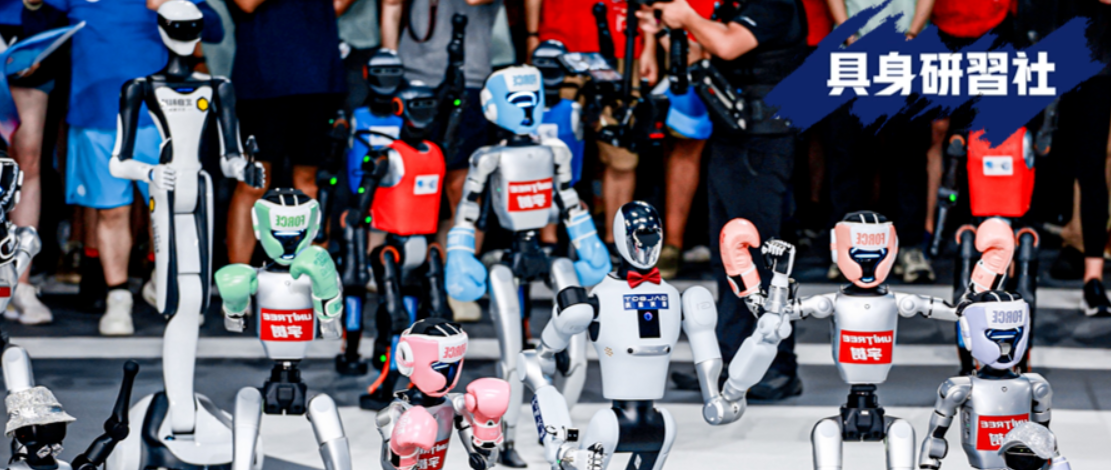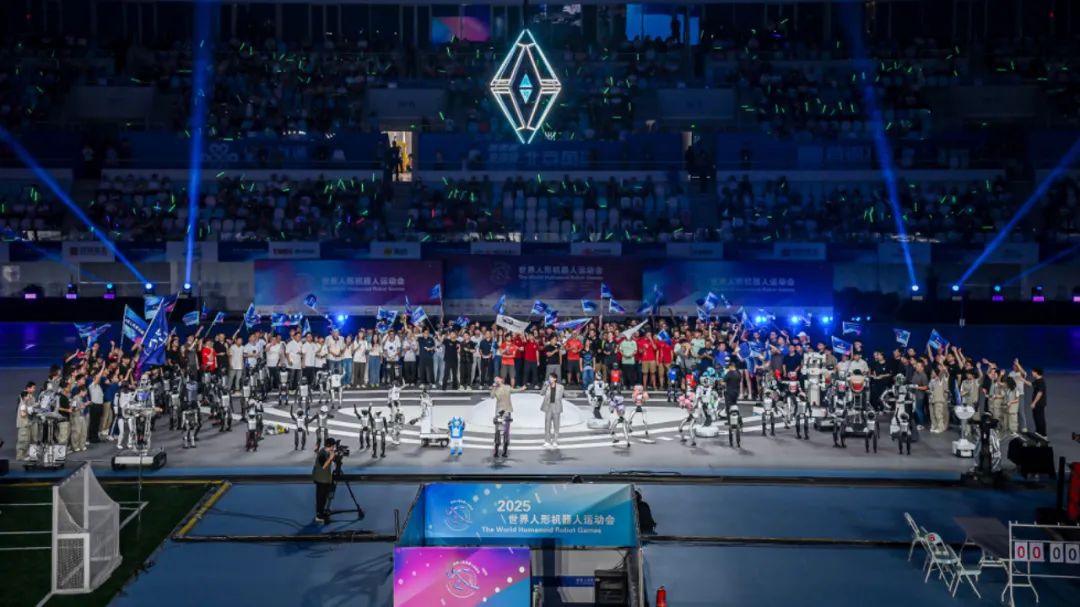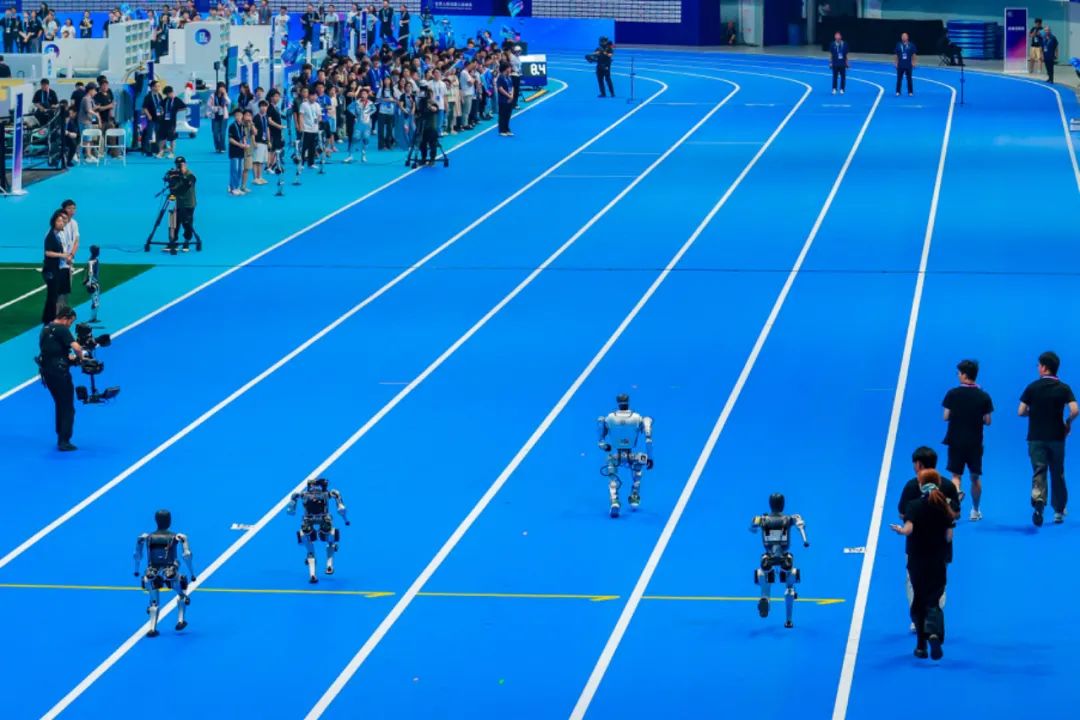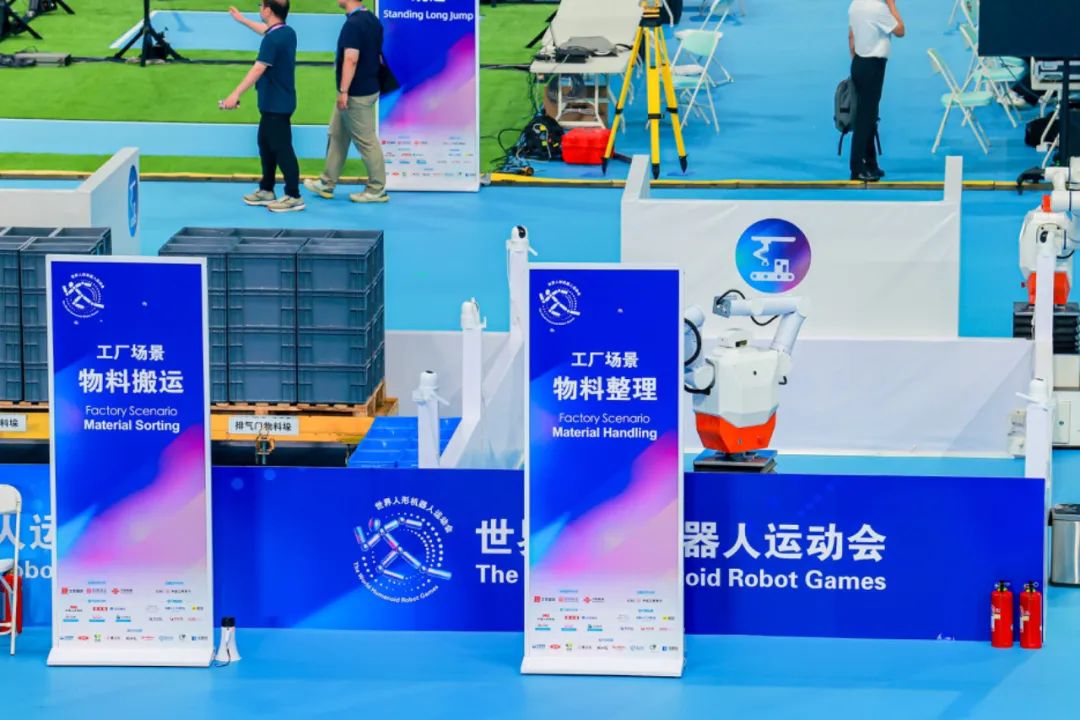Humanoid Robot Games: A Glimpse into the Future, Not a Race for Winners
![]() 08/15 2025
08/15 2025
![]() 510
510

Perhaps, the essence of these games was never about crowning a solitary "first place" champion. Instead, it's about "leveraging competitive rules to spur technological advancements and harnessing market attention to bolster industry development." With the whistle of this competition, humanoid robot enterprises will carve out their unique niche within the industrial landscape.
Editor: Lv Xinyi
The inaugural humanoid robot games conceal multiple layers of intention.
First, let's delve into the opening ceremony. All programs seamlessly integrated human and humanoid robot collaboration. Hu Bing and a troupe of humanoid robots strutted down the runway, martial arts enthusiasts, opera child actors, and humanoid robots shared the same stage, and more. These programs collectively painted a picture of harmony and resonance between humans and humanoid robots, setting the stage for the "era of human-robot collaboration."
Of course, the opening ceremony wasn't devoid of mishaps; there were falls and crashes, with robots being carted away. Similarly, there may be errors during the competition, but these are not "negative news." Rather, by exposing "uncertainties" or failures, real-world problems are identified and resolved, fostering long-term development.
This isn't a race; it's a window offering a glimpse into the future.

Image source: Humanoid robot games
Held from August 15th to 17th at the National Speed Skating Oval, this event featured as many as 127 participating brands and over 500 humanoid robots. It drew participation from 280 teams spanning 16 countries across five continents, including 192 university teams and 88 enterprise teams.
Unlike marathons, this competition eschews long-distance events. Rather than testing endurance like half-marathons, it focuses on hardware and body structure design. Popular competitive events include short-distance and team-oriented challenges like the 100m dash, obstacle courses, long jump, etc., relying on explosive power and body coordination. Multi-robot football tests teamwork and intelligence among robots.
Performance and scenario events emphasize assessing humanoid robots' practical skills and intelligence levels, exploring avenues for robots to find practical applications.
Reflecting on this, competitive events like football matches in sports mirror "event-based economies," while dance performances represent the earliest exhibition scenarios for robots and are relatively mature. Furthermore, application-oriented scenarios such as factories, hospitals, and hotels align with more specific industrial, medical, and service industry contexts.
This humanoid robot event, encompassing "sports + art + application" dimensions, doesn't prioritize ranking as its ultimate goal. Anchoring technology within scenarios is the true intention, identifying a "use" for robots ahead of mass production.
Judging by the competition results, there's no clear-cut winner in each event. The runner-up in the 100m dash doesn't necessarily boast the best gait, and the contestant who first completes the cleaning task might not be the cleanest. Each participant has their unique strengths, and crossing the finish line first is merely one evaluation criterion.
Perhaps, the essence of these games was never about securing the "first place" title.
"Leveraging competitive rules to spur technological advancements and harnessing market attention to bolster industry development." With the whistle of this competition, humanoid robot enterprises will solidify their positions within the industrial landscape.
Two core questions loom: Unitree and remote control
Will remote control still be a factor? Will the Unitree team participate?
The answer to both is yes.
First, let's discuss remote control. The competition rules explicitly state that robots can be manually remote-controlled, though only wireless remote control is permitted. Remote control operators must perform within a designated area and can also opt for full autonomy. Notably, the conference stipulates that for free gymnastics, single-robot dance, and group dance events, the robot's control method must be fully autonomous.
Now, onto Unitree. Before the games, Unitree officially announced its personal participation in the inaugural World Humanoid Robot Games. Additionally, Unitree emphasized that besides their own team, multiple teams are utilizing Unitree's hardware (with each team independently developing their algorithms).
Prior to the games, "warm-up" videos of robots like Unitree and Tiangong circulated, with Unitree's H1 series robots suspected of surpassing human running speeds, in stark contrast to the stumbles seen in half-marathons. Unitree Technology is experiencing a moment of self-validation. As of press time, Unitree Technology has secured first place in the first group of the 1500m finals.
Generally, humanoid robot manufacturers strive to distinguish their products from being labeled as "big toys," with "remote control" considered a taboo in the industry.
In reality, there's no clear demarcation between remote control and autonomous decision-making, nor is there a right or wrong technical route. The former tests the body, while the latter tests the brain.
The crux of autonomous decision-making lies in "machines deciding instead of humans," enabling robots to autonomously plan behaviors based on environmental perception through algorithms. It's suitable for unstructured, highly repetitive, or low-risk scenarios, such as robots in commercial settings that rely on visual recognition of meal packages, autonomously grasp goods, place them in warehouses, and perceive dynamic environments in real-time to autonomously plan delivery routes. This entire process doesn't require manual intervention.
The core of remote control revolves around "human-robot collaboration" and "human-led decision-making," extending human operational capabilities through remote control.
For instance, staff from Crossing Innovation remotely controlled the humanoid robot atom in Shandong to make steaks through a VR helmet in Shenzhen. The Robody nursing humanoid robot from the German robotics startup Devanthro allows caregivers to remotely control the robot to attend to the daily lives of the elderly.
Autonomous decision-making represents the ultimate outcome, but it doesn't imply that remote control is futile. What we need are embodied intelligent products that can genuinely solve problems.
Both essentially center around constructing solutions for scenario pain points. In scenarios with varying needs for embodiment concentration, there's no need to obsess over the "superiority" or "inferiority" of technical routes. Only by satisfying actual scenario needs as the goal can a virtuous closed loop of "scenarios defining technical directions and technical services addressing scenario pain points" eventually form, allowing robot technology to truly take root in the practical soil of problem-solving.
Don't just fixate on the "first place"
In this humanoid robot competition, individual events like the 100m dash and 100m obstacles capture attention akin to similar human sports events. This type of competition best showcases robots' performance – lightweight design, high-torque motors, motion strategies encompassing step frequency and gait, and more.
It's evident that this project will have the same "event spillover effect." Take Songyan Power, a standout performer in the April marathon event, as an example. Due to the N2's excellent performance, it garnered a substantial number of orders post-event. It's said to have secured 2,000 commercial orders in the first half of this year.

Image source: Humanoid robot games
Moreover, at the 2025 RoboCup Brazil Robot Soccer World Cup in June, both the T1 and K1 models emerged victorious, setting a record-high for product deliveries in July with over 120 units of the two champion models delivered. It's understood that over 95% of the teams in this competition will utilize their robot bodies to participate.
From a team event perspective, football matches like 3v3 or 5v5 and group dances thoroughly test robots' collaborative abilities, requiring each robot to perceive other robots' positions in real-time, coordinate with one another, and plan goal routes.
The core objective of multi-robot collaboration is "information sharing, task allocation, path planning, and action coordination." For every additional robot on the field, the robots' decision-making dimension significantly increases.
When Figure AI unveiled the Helix model, the video demonstrated two robots cooperating to deliver ingredients and place them in the refrigerator. They solved the smallest unit problem of "group collaboration" in household service scenarios. From deploying dozens of UBTECH Walker S1s in the Zeekr 5G factory for multi-robot, multi-scenario, and multi-task humanoid robot collaborative training to the cross-model ecological collaboration of multiple hardware products under UAI Robots and Hiling, this represents the rudiments of "group intelligence."
Certainly, this group collaboration ability will enable robots to form a "1+1>2" synergistic effect. On a smaller scale, it can link other intelligent agents to form a service network. On a larger scale, it can foster broader productivity and even give rise to "production relations" akin to human society.
Whether it's individual events or group collaboration competitions, there's never been an absolute "winner" in the realm of robots, much like in human 100m races where the fastest runner doesn't necessarily possess the most scientific gait.
At this competition, the model that wins the 100m might be unparalleled in straight-line speed but might struggle to adapt to its companions' rhythm in group dances. The team that triumphs in the football match might not possess the explosive power of individual event winners but wins through precise collaborative decision-making. There's no such thing as a "single move determining victory" in robot competitions.
Three scenarios are crystal clear
Workflow forms a closed loop
As a humanoid robot event spanning "sports + art + application" dimensions, it aligns with landing scenarios such as events, exhibitions, factories, service industries, and households.

Image source: Humanoid robot games
In a previous article by the Embodied Learning Society, "The person who sends humanoid robots to compete must be a genius," it was posited that "leveraging competitive rules to spur technological advancements and harnessing market attention to bolster industry development." Through intense competition and the games' outcome, it stimulates technological iteration among enterprises. These high-impact performances on the field far surpass demo promotions and technical whitepapers, bringing real orders to enterprises.
Furthermore, through a series of operations, event competitions can generate revenue for enterprises. In a previous interview, Zhao Weichen, Vice President of Accelerated Evolution, specifically discussed a similar viewpoint. He noted that on one hand, event scenarios resonate with educational scenarios, with a strong "research + competition" bond. Their football robot courses have been incorporated into numerous universities and high schools, and the educational scenario market is even larger. On the other hand, there's also the potential for revenue from event IP operations. Not long ago, the "RoboMaster" event they hosted successfully commercialized – "700 tickets, numerous sponsors, over 300 million exposures."
The "art" dimension can be viewed as an umbrella term for exhibition scenarios, currently primarily used for mall traffic attraction, event warm-ups, and more. This type of scenario can be benchmarked against drone performances, and the market does indeed exist.
Moreover, if we expand the imagination of the "art" dimension: robots could play roles requiring precise and repetitive actions on the drama stage, serve as museum tour guides adjusting their tone based on exhibit stories, or even collaborate with human artists to create installation art that fuses mechanical aesthetics with humanistic thinking.
There are already such "artistically inclined" products in the industry. The humanoid robot Adam from PNDbotics either plays guitar alongside human singers at music festivals; or appears alongside historical architecture and traditional crafts in Beijing's central axis; or witnesses the aesthetics created by humans at the Central Academy of Fine Arts Museum... At this moment, mechanical aesthetics truly shine.
Lastly, there's the "application" dimension. The scenarios presented here are closer to daily life compared to sports and art and also test robots' embodied brain capabilities the most. Their task performance is intertwined with whether robots can evolve into a new type of productivity and thus enter our lives and households.
However, when you meticulously observe the competition items in scenario events, you'll discover that the "workflow" forms a closed loop. From material handling to sorting in factories, drug classification to splitting and packaging in hospitals, and greeting to cleaning in hotels, these competition items aren't fragmented, standalone unit-based skill assessments but rather closed-loop tests of an entire workflow.
Taking the factory environment as an example, Wang He, founder and CTO of Galaxy General, candidly stated in a recent interview: "Handling is merely the first step. Besides handling, closed-loop capabilities for palletizing are also essential. Only when both handling and palletizing form a closed loop can robots truly be competent for the entire workflow; otherwise, the effect of doing half the task is suboptimal."
The closed-loop workflow signifies that robots have transcended being mere superficial enhancements for specific scenarios, evolving into entities with the capacity to handle entire operational sets. This fundamentally signifies a paradigm shift for robots, transitioning from mere "tool attributes" to assuming "systematic roles." In simpler terms, when robots are solely utilized as substitutes for individual processes, they are still pitted against automation equipment. However, with the workflow closed, the scope and return on investment (ROI) of robot operations become more evident, enabling them to genuinely demonstrate their value in a systematically integrated manner.
This initiative establishes a "technology-scenario" coordinate system. Within this framework, humanoid robot enterprises can clarify their product positioning amidst competition and identify directions for technological advancements. This "autumn military review on the battlefield" metaphorically represents a catalyst that will further expedite industrial maturity.








